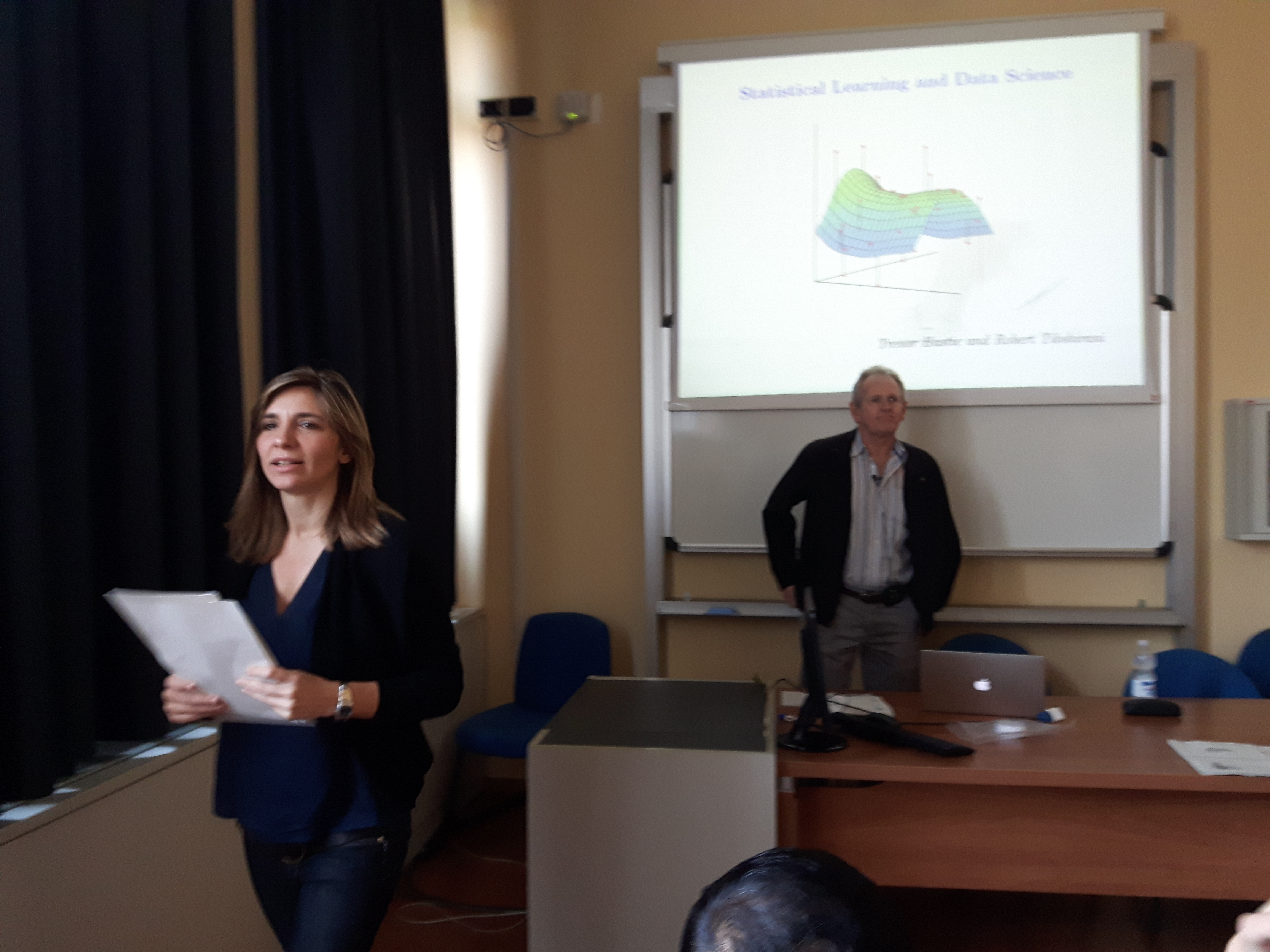
(Above, prof. Menardi introduces the lectures).
The field of statistical learning is booming these days, with a high demand for university lectures and courses, as higher education institutes are getting equipped with courses in "data mining", "big data", "data science", and the like. But what is it exactly ? The term "Statistical Learning" indicates something at least in part different from the other buzzword "Machine Learning", as while the latter arose as a subfield of Artificial Intelligence, and now focuses mainly on specific artificial intelligence applications, Statistical Learning arose as a subfield of Statistics.
Of course there is a lot of overlap between the two disciplines, but while machine learning puts the emphasis on large scale applications and prediction accuracy, statistical learning focuses on models and their interpretability, as well as on their precision.
So, this is the most important concept I learned today! Most of the rest, which was introductory in nature, was not new to me - but I must say I was quite pleased with the clarity of exposition and the insight of Hastie's lectures. He always gives you the chance to take a step back and see the problem from different angles. Plus, there is a graph that was confusing me when he discussed a topic in linear regression called "Forward stepwise selection". Do you know what that is ? I may write a separate post to discuss that.
Below is a pic of some of the AMVA4NewPhysics early-stage researchers who follow the lectures this week - the course is mainly aimed at their training although the whole Statistics department in Padova benefited from the lectures.

[Incidentally the topic under which this article is filed is "Mathematics", as there seems to be no "Statistics" or "Artificial Intelligence" option to file it in.... I hope I am not offending anybody!]
----
Tommaso Dorigo is an experimental particle physicist, who works for the INFN at the University of Padova, and collaborates with the CMS experiment at the CERN LHC. He coordinates the European network AMVA4NewPhysics as well as research in accelerator-based physics for INFN-Padova, and is an editor of the journal Reviews in Physics. In 2016 Dorigo published the book “Anomaly! Collider physics and the quest for new phenomena at Fermilab”. You can purchase a copy of the book by clicking on the book cover below.





Comments